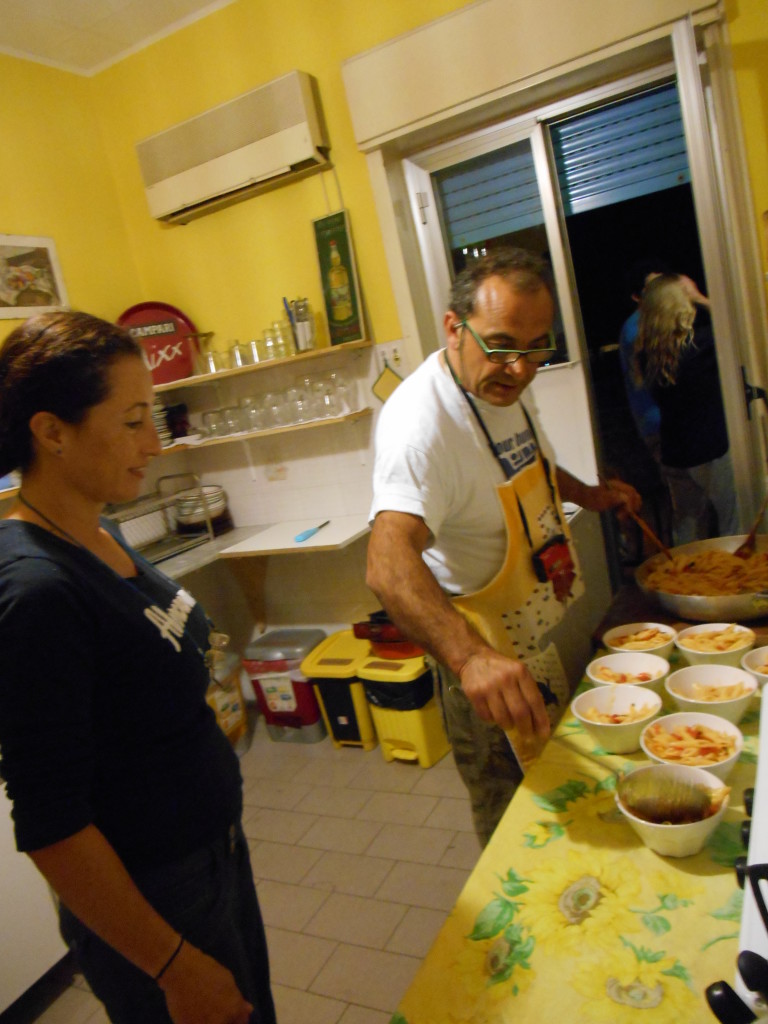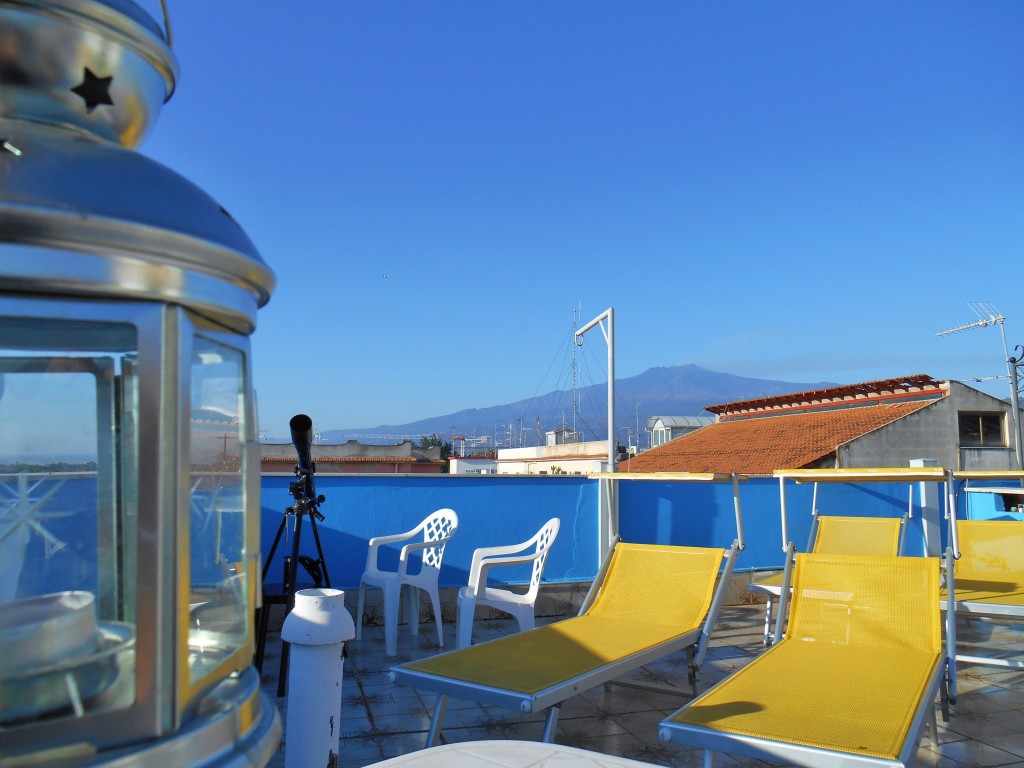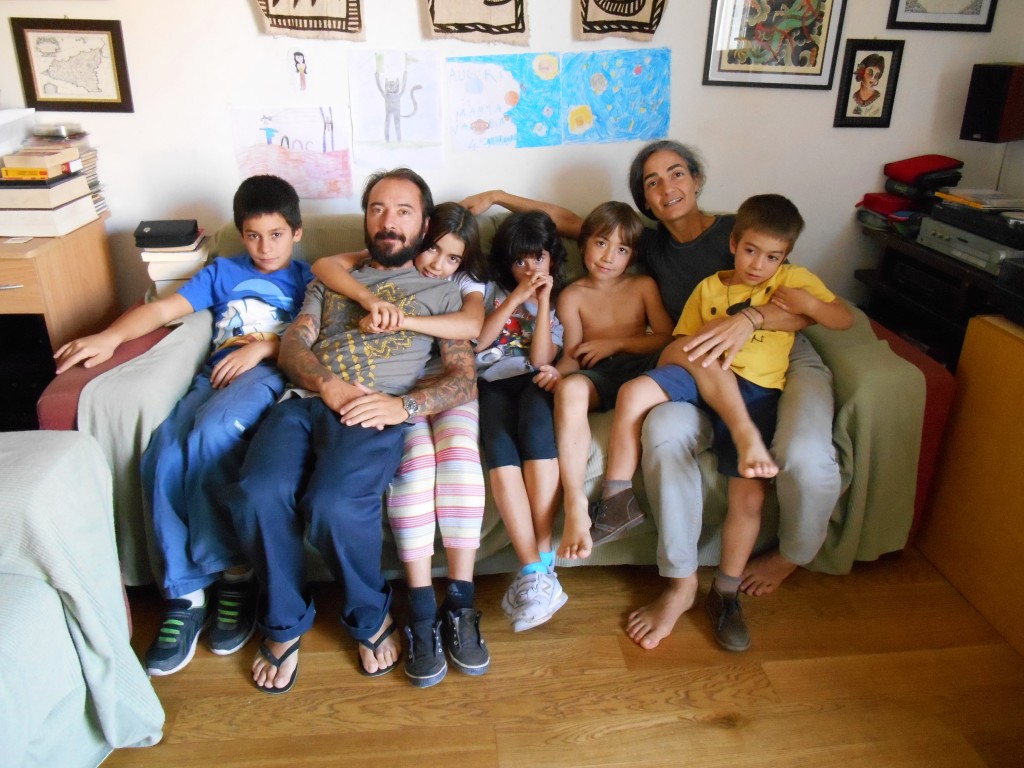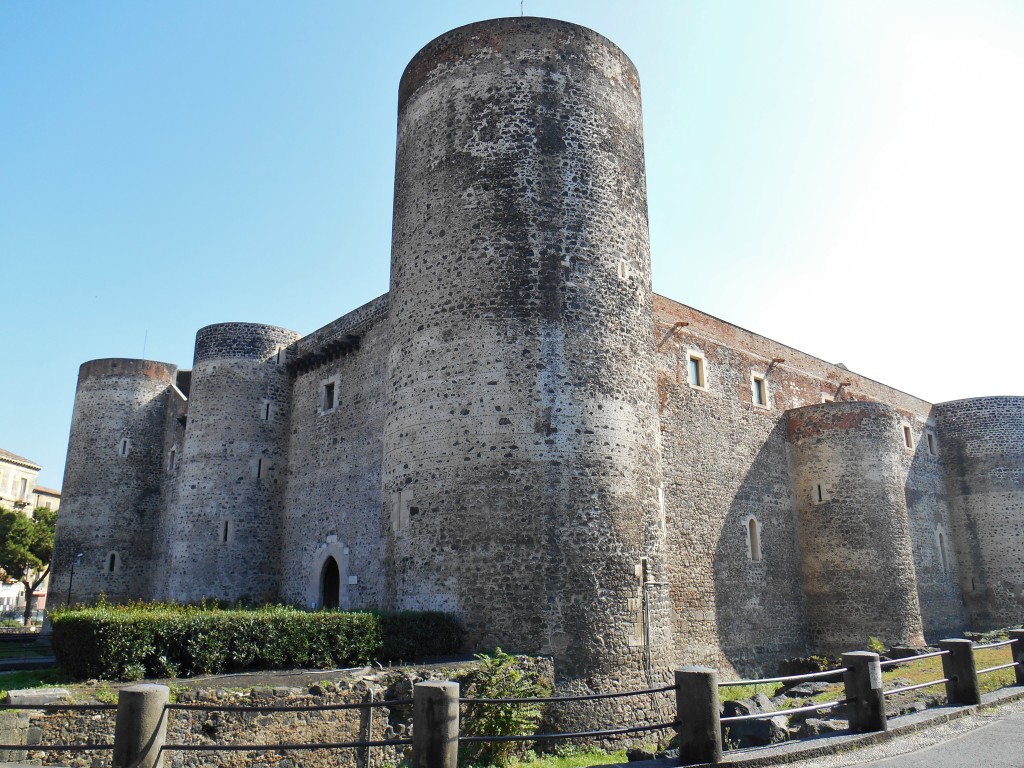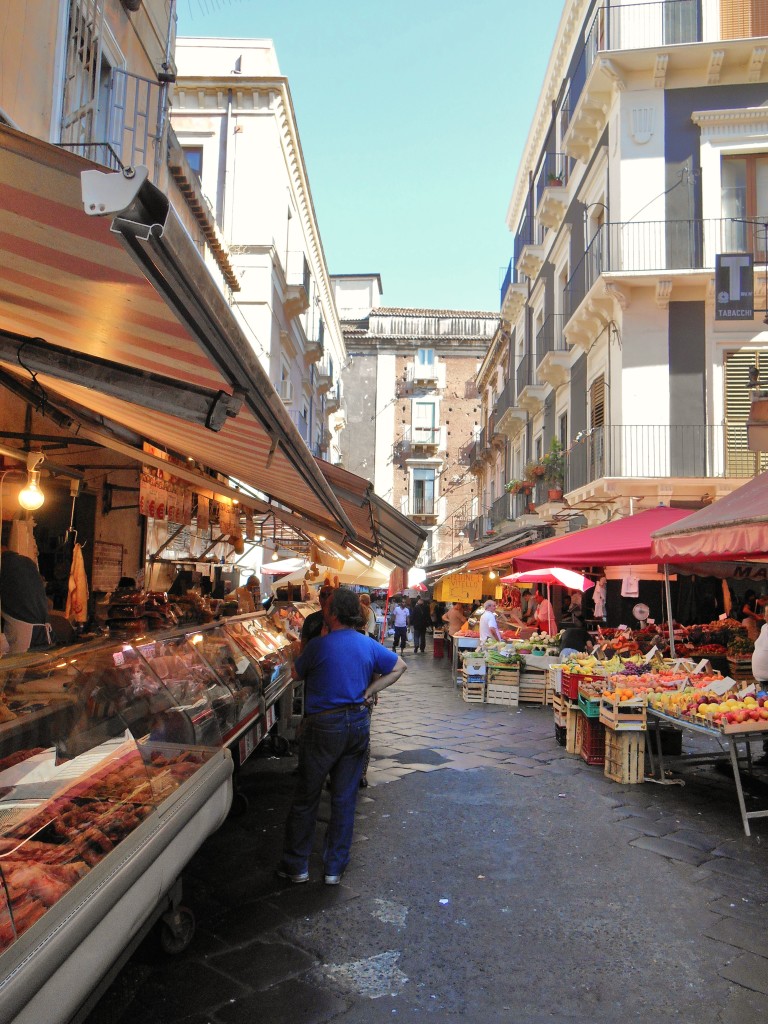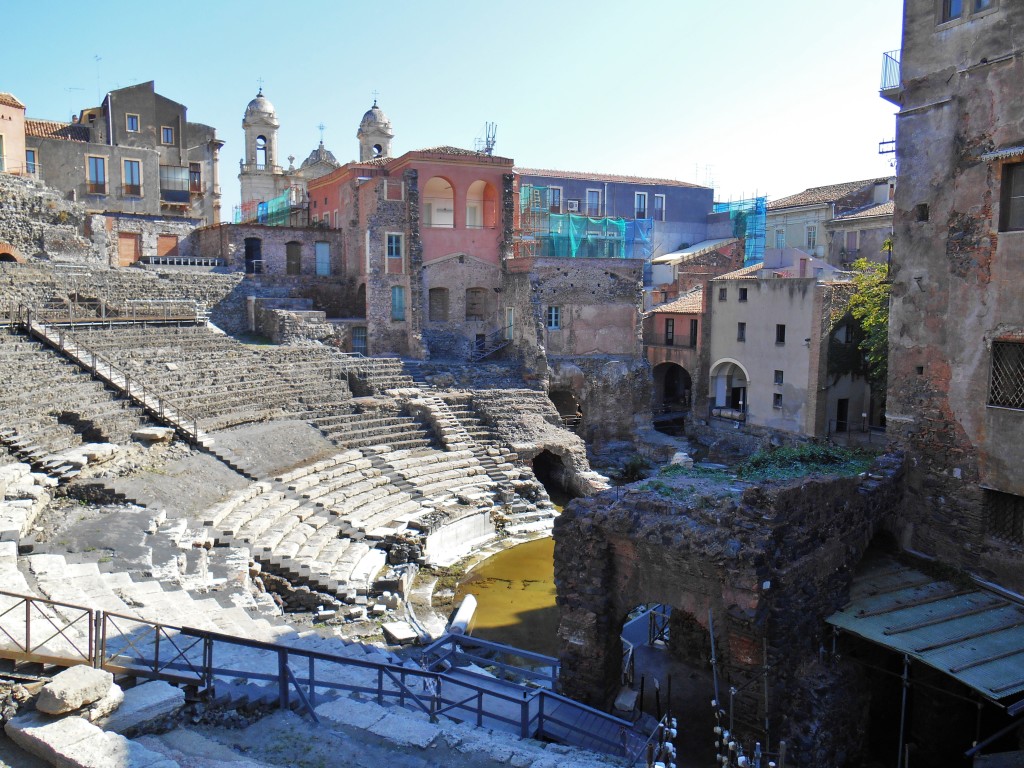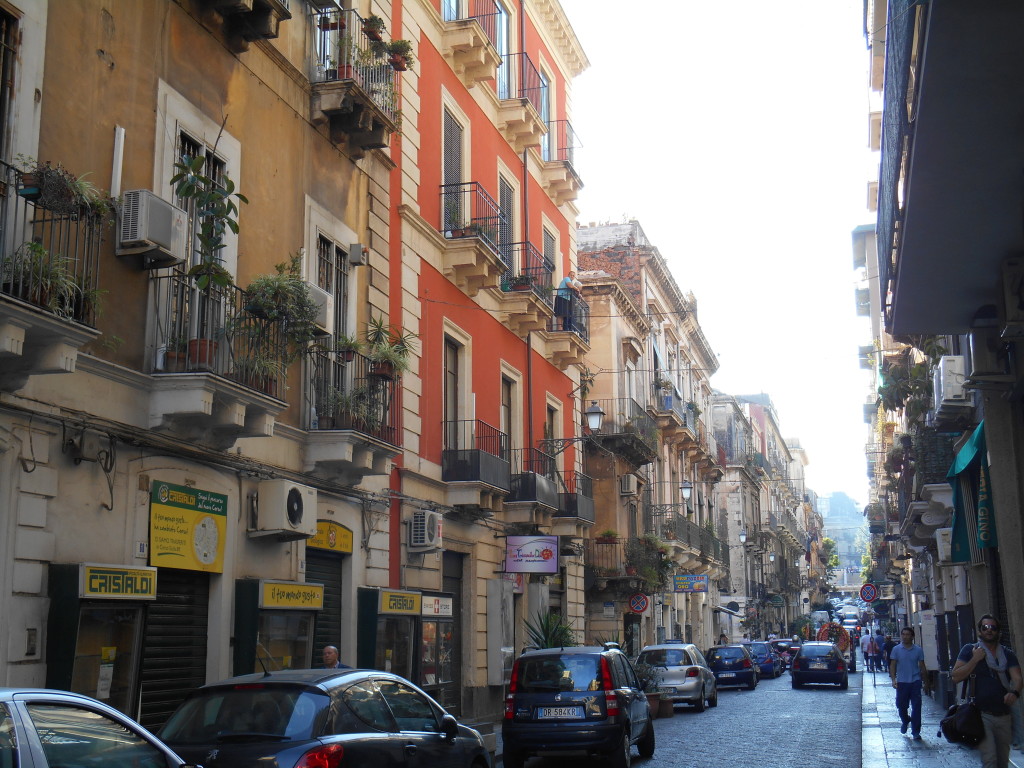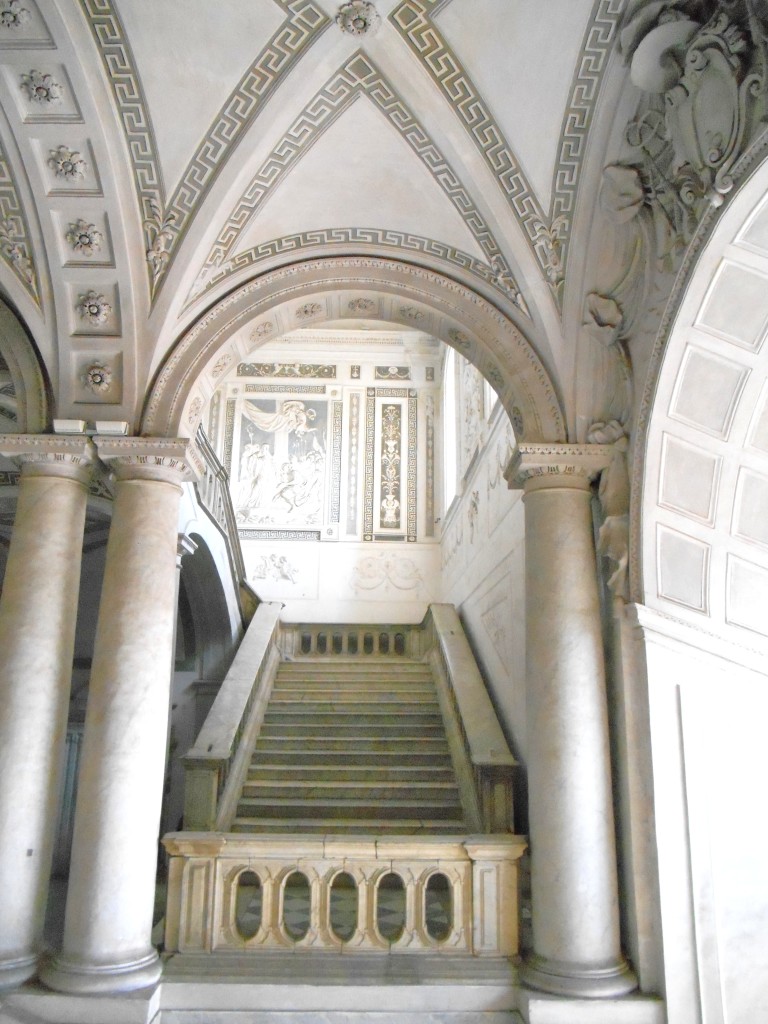Many times I have come to Catania before, and always happy to be here. I usually do a little walking around the town, but mostly tired after long flights, and with not enough time to explore a lot, I have to admit, much of that time is spent sleeping. This time is different. Deciding to take time and learn Italian from Italians in Italy I chose Sicily for the weather during the winter season. It is warmer here and I do not understand why there are not more people visiting this time of the year. Taking sun is perfect, as it is not too hot, and the water is crystal clear and refreshing. At night the temperature drops and we need a sweater but that is nice, too. At this time, with the need to stay longer so I can learn and practice the language, I searched a few ways to be around Italian speakers, interacting and helping at the same time, while not spending too much. I had some ideas and e-mailed a lot of people and businesses. Not thinking about the time of year the weather getting colder and colder, I wrote to businesses in Roma first. Realizing soon after that I do not like cold and that cold will come sooner to Rome than to the Southern Italy, I changed my strategy and started all over, concentrating on Sicily; mainly Catania and Taormina, and I am glad I did. My first two days with a local family in Catania were wonderful. The family was great and their three children a delight. I rested and just visited with them on the first day, but explored the town with a travel guide and a map on my second. The itinerary I followed took me to places I had just accidentally passed by before, while also discovering other places, totally hidden, on previous walks. Centuries of archaeology discovered lost treasures, hidden by time everywhere throughout Catania. Sicily has an amazing history and although Italian is the official language these days, this amazing island has a rich and tumultuous past and a few dialects spoken. Not strange at all, considering all of the dominations – dynasties and people that came through: Greeks, Romans, Barbarians, Goths, Byzantines, Arabs, Normans, Swabians, Angevins, Aragonese, Spaniards, House of Savoy, Austrians and Bourbons. I marveled at the sites as each street and piazza has it’s own personal charm. Churches are everywhere throughout the city but Via Crociferi in particular is an interesting site, with two churches next to each other (Church of San Benedetto and Church of San Francesco Borgia) and another just across from the other two (Church of San Giuliano). In Baroque style, most of these churches were commissioned by rival religious orders after the 1693 earthquake. The Terme della Rotonda and the other bath houses and spas were great meeting places during the Roman society, as much as they were used for therapeutic purposes. The Roman Amphitheatre was brought to light in 1904 but even if in the past it could seat up to 15,000 people, today just a part is visible, the rest still buried under the neighboring piazzas and streets. Built in 1239, Castello Ursino is a strong medieval building which was moved by the lava from the Etna eruption in 1669. Lava filled the moat, circled the castle and moved it away from the coast. Two rivers (River Amenano and Lognina) and a lake (Lake Nocito) were also buried by lava then. Today the castle holds the collection of the the Civic Museum. Piazza Duomo is an impressive display of Sicilian Baroque style. In the Cathedral here are the relics of Sant’Agata (the city’s patron saint). The Fontana dell’Elefante is an interesting mix of pagan and Christian cultures. The lava stone made elephant became the city’s symbol and the obelisk on top of it is from Aswan, Egypt. The eight sides of the obelisk are covered in hieroglyphs referring to the goddess Isis, while on top of it are mounted a sphere and a cross, the emblem of Sant’Agata. Fontana dell’Amenano is also in Piazza Duomo and right behind it is the loud, colorful and smelly fish market, the Pescheria. A few other important churches in Catania are the church of Sant’Agata al Carcere, where Agatha was tortured and killed, the church of San’Agata la Vetere and the little church of Sant’Euplio, which was destroyed by bombing in 1943, but were, on the surviving wall, now are the sculptures of the Apostoles. A necropolis, or burial area, from the Roman period was also discovered near the Central Post Office building during excavation. This city is built on layers of history and it is interesting thinking what could be under your feet while walking these streets. To see the pictures below enlarged you can click on them and when they open up, one more click will enlarge them full screen.
